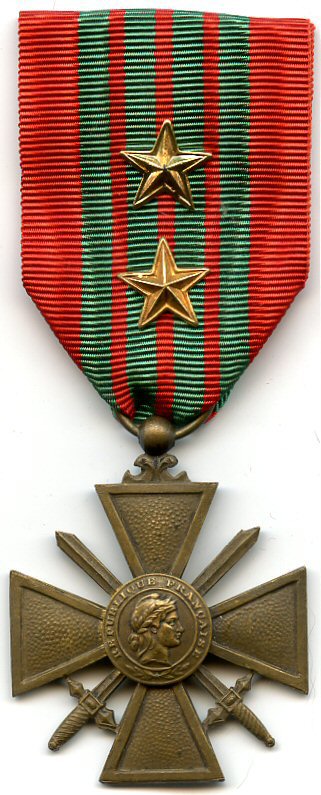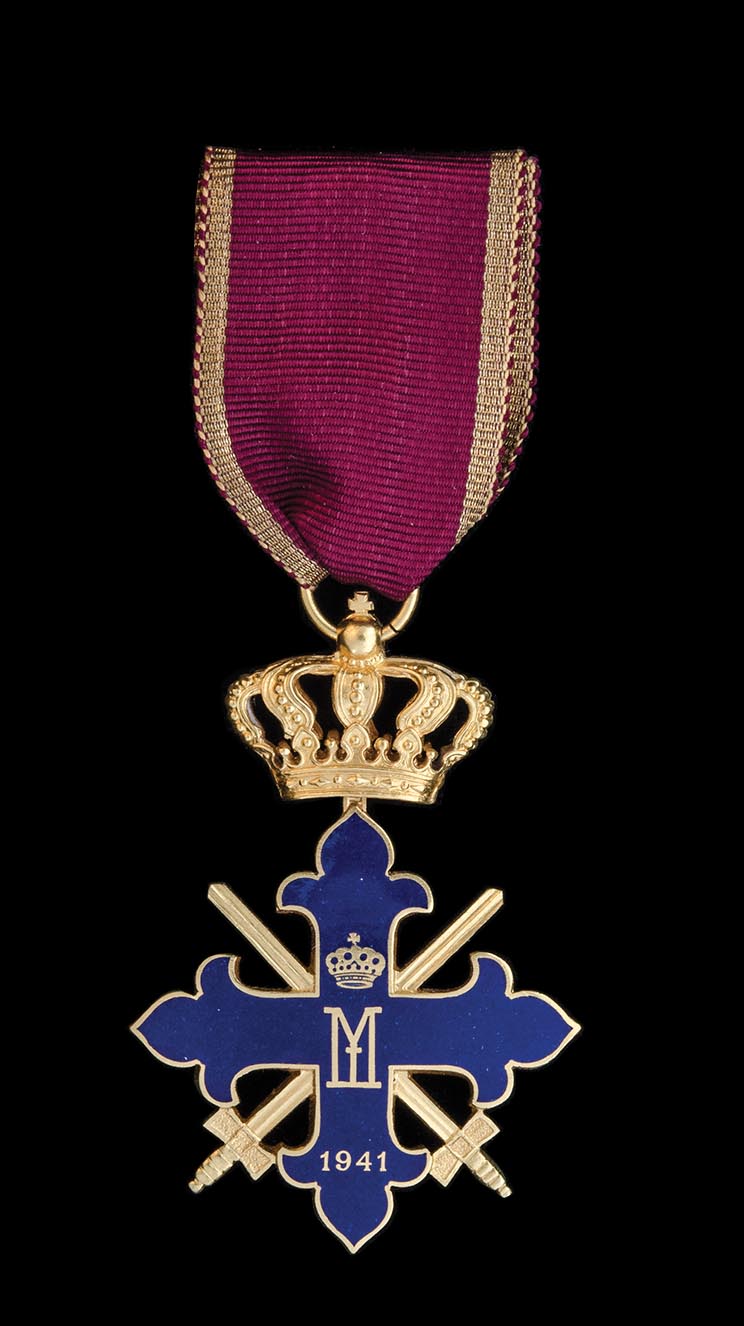France
“Honneur et Patrie” (“Honour and Fatherland”)
The “Legion of Honour” or Ordre national de la Légion d'honneur is a French order established by Napoleon Bonaparte on May 19 1802. While it is, collectively, the highest order in France, it is divided into five degrees of increasing distinction: Chevalier (Knight), Officier (Officer), Commandeur (Commander), Grand Officier (Grand Officer) and Grand'Croix (Grand Cross).
Though all French orders of chivalry were abolished during the French Revolution, it was Napoleon and the First Consul’s wish to create an award that would be bestowed to civilians and soldiers alike. Thus, the “Legion of Honour” was created. Napoleon wanted a French where achievements were built on merit rather than nobility.
The first distribution of the Legion of Honor, Jean-Baptiste Debret. Jean-Baptiste Debret

The first “Legion of Honour” was awarded in 1803, though no records remain of its recipient. However, a painting by Jean-Baptiste Debret (featured below) does reimagine the ceremony. In total, there have been over 94,000 variations of the “Legion of Honour” awarded, though the number is believed to be around one million. There is a recorded 67 recipients of the “Grand Cross”, with just one “Grand Maître”.
The “Grand Maître” (Grand Master) is the head of the Legion, and has always been the Emperor, King or President of France. Currently, this is President François Hollande. He was appointed Grand Master on 15 May 2012 and ex officio, Grand Cross of the Order.
Specifically for World War II was the “Croix de guerre” (War Cross), which was awarded in1939–1945. The medal honoured those who fought with the Allies against the Axis forces during World War II. The “Croix de guerre” was designed by the sculptor Paul-Albert Bartholomé, featuring a Maltese cross with two swords through the center. Around the profile in the middle are the words République française (“French Republic”).
Croix de guerre (War Cross). Fdutil

Like the “Legion of Honour”, the medal was awarded in varying degrees: A bronze, silver, and silver-gilt star, and a bronze, silver, and silver-gilt palm.
Romania
The “Order of Michael the Brave” (Ordinul a Mihai Viteazul) was instituted by King Ferdinand 1 during the early stages of the Romanian Campaign of World War I, then later during World War II. The order itself can be awarded to an individual or an entire unit. The medal is named in honor of Prince of Wallachia, Transylvania, and Moldavia.
Romania, Order of Michael the Brave, 1941-44 issue, Third Class breast badge, in gilt and blue. Credit

There were three classes to the “Order of Michael the Brave”. In total, over 2000 were awarded; over 350 in WWI and around 1700 in WWII. The First Class insignia is known as Grand Commander of the Order. This was then divided into Special Class, reserved for the Sovereign of the country, and First Class, which was for members of the Romanian Royal Family who were active in war.
The Second Class Insignia of the Order is referred to as a Commander of the Order. Finally, the Third Class of the Order is referred to as an Officer of the Order. The latter was the commonly awarded as opposed to other grades. While it was last awarded in 1944 and disbanded in 1947, the military distinction was awarded to Axis Powers, many in the Wehrmacht, including Erwin Rommel and Hermann Göring.
Poland
HONOR I OJCZYZNA (Honor and Fatherland)
The War Order of Virtuti Militari (“For Military Virtue”; in Polish: Order Wojenny Virtuti Militari) is Poland’s highest military award. It recognizes a recipient’s heroism and courage in war, and was created in 1792 by Polish King, Stanisław II August. It is one of the oldest military decorations in the world that is still in use.
Like many other medals, there are numerous classes, but the War Order of Virtuti Militari structures them slightly differently. It recognizes acts such as personal heroism or leadership. The medal can be compared the Victoria Cross or the American Medal of Honor.
Grand Cross of Virtuti Militari Order, Poland. The Highest Military Order in Poland. Grand Cross (Ist of Order) Official Pattern. Polish govt

However, shortly after the medal’s introduction, it was abolished when the Polish–Lithuanian Commonwealth was destroyed. Not only did the powers abolish the medal, they forbid people from wearing it. While over the years, the medal was abolished and reinstated, thousands of soldiers, both foreign and domestic, have received the distinction. Several cities and even a ship have also been awarded the medal. The last occasion a person received the medal was in 1989, and it has not been awarded since.
Japan
The “Military Medal of Honor” was a military decoration in the Empire of Japan. No longer awarded, it was given to those who had participated in battle were created specifically for the conflict in which the recipient had been involved in. During the Allied Occupation of Japan (1945–1951), these decorations were abolished. With the adoption of Japan’s postwar Constitution, which disavows the right of the state to become active in war, the medals are unlikely to return.
1931-34 China Incident War Medal. Credit
The “China Incident War Medal” (known as Sina jihen jugun kisho) was created on July 27, 1939. This medal was awarded for service in China, any time from the 12–20 years of the Shōwa period. This period, also known as the “period of radiant Japan”, was the rein of Hirohito. The Japanese government still uses “China Incident” in formal documentation. The media, however, will often use the “Japan-China Incident”.
